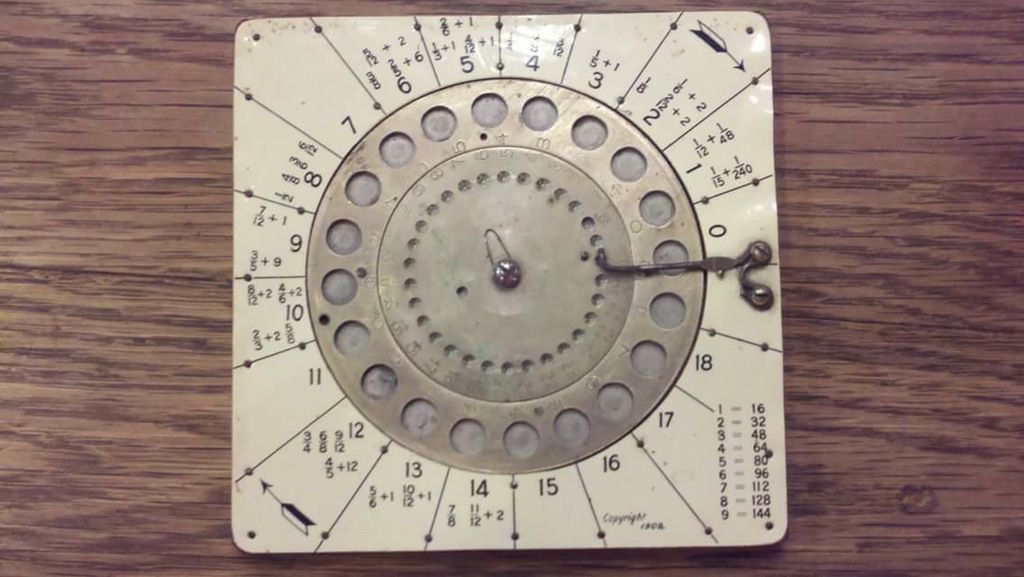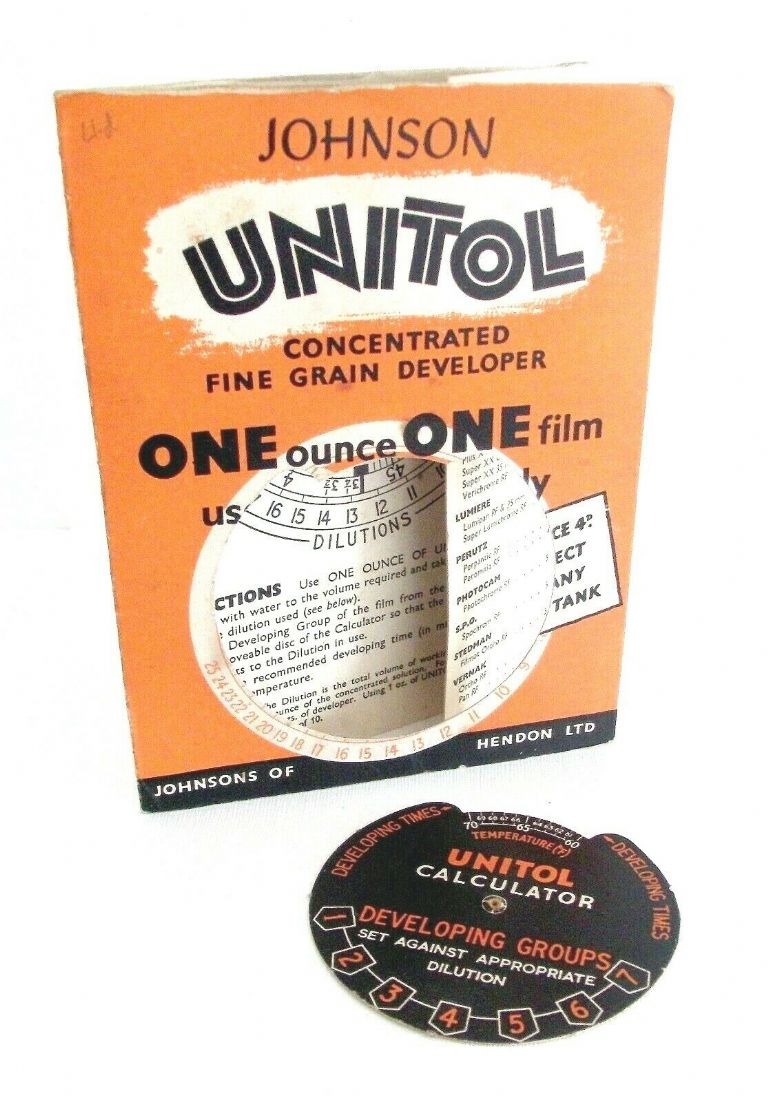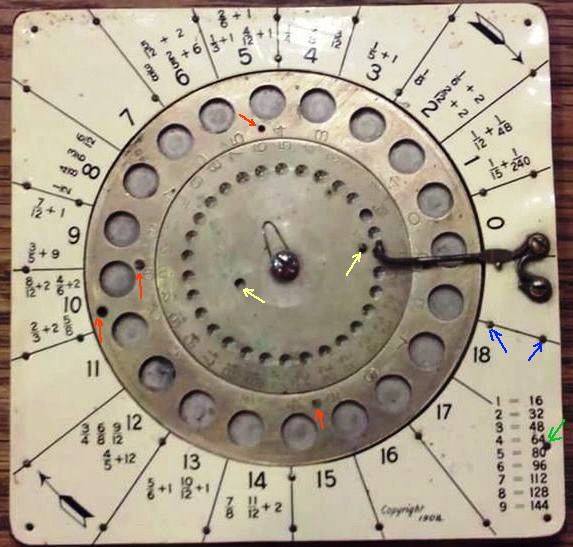Blanks drawn with musical-instrument making and textiles manufacture, I turned to slide-rule making.
The Weymouth company, Blundell-Harling (est. 1948) stopped making conventional arithmetical slide-rules decades ago when the electronic calculator arrived, but still makes special-to-trade slide-rules, many of them circular, and a range of drawing-boards. Its sales manager was unable to identify it but directed to me to the vast array of all sorts of odd calculating instruments she'd found via Google. Among them was another photo of our Old Faithfull, on Reddit.
She too, concluded by asking me let her know when (if!) we identify it!
'
Next I examined the Science Museum's on-line exhibition.
The nearest was a late-19C device looking very much a brother product to our specimen, similar in design essentials to its discs, used in creating cyphers. The resemblance suggested at least the same manufacturer, but it was alphabetical not arithmetical. (I tried to copy the photo to here, with acknowlegement of course, but unsuccessfully – might be a protected image.)
'
Juddy –
Interesting idea. Our calculator is contemporary with considerable use of ropes for power-drives and transport systems, as well as load-lifting and standing-rigging.
Henry Spooner's Machine, Design and Construction (Longman, Green & Co, 1913) details vegetable-fibre, leather and steel-wire rope construction and use, but although very mathematical it shows no obvious links to the maths we have here.
'
Peter Cook suggests Precious-Metals weighing; Calllum thinks not; but together they made me ponder Apothecary:
The English version of the [Apothecary weights] system is closely related to the English troy system of weights, the pound and grain being exactly the same in both.[4] It divides a pound into 12 ounces, an ounce into 8 drachms, and a drachm into 3 scruples of 20 grains each. (Wikipedia)
Now, do those factors fit?
Fixed scale: 20 (0-19 though showing no printed "19 " seems odd).
Intermediate, rotary scale: 20. Central scale: 30 (0-29).
Many but perhaps not all of the fractions are ratios of factors or multiples of those numbers.
'''
That Science Museum search, I am afraid, was very frustrating by its own web-site; of a standard I regard too low for a national Science Museum! It uses a filter system as in major retailers' catalogues, but it is very rough, its date-choice system largely meaningless, and can take only one criterion before switching back to the list.
Consequently, however I entered the request, it randomly mixed all the various calculators and slide-rules – including one for treadmill-labour arithmetic – with any number of objects irrelevant to the subject.
Worse though, this had a very unexpected, rather distressing result.
Most were early medical instruments.You'd expect some Victorian – Edwardian medicalia to look not very pleasant, and though the "Vibrator" amused me (no – not Ann Summers, " Therapy" ), one of these chance finds gave me a shock hard to shake off. It is a knife with hook-shaped blade, and labelled "Decapitating Knife". Its category? "Gynaecology & Obstectrics".
Edited By Nigel Graham 2 on 14/01/2022 11:50:41
Farmboy.







